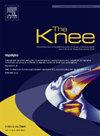Clinical outcomes of quadrupled hamstring tendon use for anterior cruciate ligament reconstruction in the paediatric population: A systematic review
IF 2
4区 医学
Q3 ORTHOPEDICS
引用次数: 0
Abstract
Background
This study aimed to perform a systematic review to assess complication rates and clinical outcomes after use of quadrupled hamstring tendon graft for anterior cruciate ligament reconstruction (ACLR) in the paediatric population.
Methods
A systematic literature search was conducted following PRISMA guidelines and registered prospectively. Comparative and non-comparative studies that explicitly used quadrupled hamstring tendon for ACLR in skeletally immature patients were included. Patient-reported outcome measures, radiographic measurements and functional outcomes were reviewed. Quality assessment was performed using the Newcastle Ottawa Score.
Results
Thirty-four studies met the eligibility criteria with 1384 patients. The mean age was 13.5 years with 47.3 % males and mean follow up of 44.2 months. The overall complication rate was 14.2 %, graft failure was 6.5 % and revision surgery was 2.6 %. The mean postoperative Lysholm score was 93.0, the Tegner score was 7.3, and the IKDC score was 91.4. Return to activity was 88 %. The mean KT-1000 was 1.59 mm. The mean postoperative mLDFA was 91.0°, mMPTA was 87.2° and femorotibial angle was 2.59°.
Conclusion
Quadrupled hamstring tendon graft in ACLR offers good to excellent patient reported outcomes and low incidence of growth arrest. The graft re-rupture rate is up to 6.5%.
四足腘绳肌腱用于儿科前交叉韧带重建的临床结果:一项系统综述
本研究旨在对儿科人群使用四足腘绳肌腱移植进行前交叉韧带重建(ACLR)后的并发症发生率和临床结果进行系统回顾。方法按照PRISMA指南进行系统文献检索,并进行前瞻性注册。包括明确使用四肢腘绳肌腱治疗骨骼未成熟患者ACLR的比较和非比较研究。回顾了患者报告的结果测量、影像学测量和功能结果。使用纽卡斯尔渥太华评分进行质量评估。结果34项研究纳入1384例患者,符合入选标准。平均年龄13.5岁,男性47.3%,平均随访44.2个月。总并发症发生率为14.2%,移植物失败率为6.5%,翻修手术率为2.6%。术后Lysholm评分平均为93.0,Tegner评分平均为7.3,IKDC评分平均为91.4。恢复活动的比例为88%。KT-1000平均为1.59 mm。术后平均mLDFA为91.0°,mMPTA为87.2°,股胫角为2.59°。结论四足肌腱移植治疗ACLR疗效良好,生长停止发生率低。移植物再破裂率高达6.5%。
本文章由计算机程序翻译,如有差异,请以英文原文为准。
求助全文
约1分钟内获得全文
求助全文
来源期刊

Knee
医学-外科
CiteScore
3.80
自引率
5.30%
发文量
171
审稿时长
6 months
期刊介绍:
The Knee is an international journal publishing studies on the clinical treatment and fundamental biomechanical characteristics of this joint. The aim of the journal is to provide a vehicle relevant to surgeons, biomedical engineers, imaging specialists, materials scientists, rehabilitation personnel and all those with an interest in the knee.
The topics covered include, but are not limited to:
• Anatomy, physiology, morphology and biochemistry;
• Biomechanical studies;
• Advances in the development of prosthetic, orthotic and augmentation devices;
• Imaging and diagnostic techniques;
• Pathology;
• Trauma;
• Surgery;
• Rehabilitation.
 求助内容:
求助内容: 应助结果提醒方式:
应助结果提醒方式:


